

Once again I had a great week at SIGGRAPH, this year in San Diego. It was a pretty scheduled year for me with both Polygon meetings and SIGGRAPH Asia meetings, but nevertheless here's some of the stuff and saw and did!
Papers Fast Forward
SIGGRAPH Asia and ASIAGRAPH
Electronic Theater
Animation Theater
Oli's Chance
Red Cliff
Demo from Southpaw Technologies' Tactic product (Exhibits)
Demo of nVidia's lighting tool (Exhibits)
Astro Boy
Ralph Guggenheim and Project 3650
FJORG (Animation Contest)
Spore Sketches
Improving In-game Character Motion (Sketch)
300's Liquid Battlefield (Sketch)
For the last several years, my favorite part of SIGGRAPH is the Papers Fast Forward. They give each paper author who was accepted to the papers 50 seconds to present the gist of their paper. Not only do these tend to be humorous (this program got started with a bunch of very funny presenters), you actually do get to see a short summary of every paper at the conference, which is extremely helpful.
Here were a few standout papers:
| Interactive Cutaway Illustrations of Complex 3D Models | |
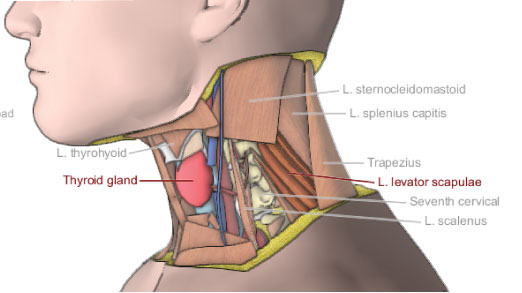 |
I thought this was the standout paper of the conference (apparently the committee liked it too, another image from this paper is on the cover of the proceedings). |
| Given a detailed, annotated 3D CAD model of a complex mechanism such as a car engine or an anatomical structure like a neck, this system automatically produces attractive, easily understood labeled cutaway drawings like the one above. Furthermore, it does it at interactive rates as you move the pointer around! Totally awesome. | |
Scene Completion Using Millions of Photographs from Carnegie-Mellon was one of a couple papers that take advatnage of all the photo-sharing sites on the web to conduct image analysis of millions of images and then use those results in some way. In this case, you open an image and select a part of the photograph that contains objects you want to get rid of (in the example they showed, it was getting rid of foreground sailboats in a harbor). The program was previously crawled the web and analyzed millions of photographs, so it looks for other photographs with similar image content and fills in the area where the sailboats used to be automatically. Really cool.
Seam Carving for Content-Aware Image Resizing from Mitsubishi Electric Research Laboratories was a fantastic idea. When you resize an image, it doesn't simply squash the image -- it finds the "important" things within the image and leaves them the same size, but then resizes the background underneath them. In other words, the person in the shot stays the same size but the background shrinks around them. This is totally ready for the next version of iPhoto!
Many-Worlds Browsing for Control of Multibody Dynamics was a way of applying dynamic simulations to produce directable results. The initial conditions of the simulation are varied and five or so possible solutions shown. The users picks one of those which is then refined for further calculation. It has potential as a way to allow directors to get the motion they want while still using simulation methods.
Ken Anjyo and some other folks over at OLM Digital presented Locally Controllable Stylized Shading, which is a new, more controllable form of toon shading.
One thing that was really nice to see this year were two papers from Adobe Systems on improvements in basic graphics technology we all rely on, that's now available in commercial software. Dynamic Planar Map Illustration described a new arbitrary-division capability in Illustrator CS3, and Efficient Gradient-Domain Compositing Using Quadtrees describes a better magic wand that is currently implemented in Adobe PhotoShop CS3.
This was a popular paper with the crowd: Yuki Mori from Tokyo University wanted to be able to design stuffed animals, but didn't know how to make patterns, so she got her thesis by writing software that could design stuffed animals, balloons, and other things with stretchable surfaces, as described in Plushie: An Interactive Design System for Plush Toys.
Image and Depth From a Conventional Camera With a Coded Aperture was one of two papers this year about how, with a slightly modified camera, you can get high-resolution color information and depth information from a single image taken with one camera.
Image-Based Procedural Modeling of Facades continues Pascal Mueller's amazing run of papers about how to model large cities, in this case by starting with photographs of some of the building in the city.
VideoTrace: Rapid Interactive Scene Modeling From Video is almost too hard to describe without watching the demo reel (indistinguishable from magic, etc.), so just click here. The author's summary: "VideoSketch is a system for interactively generating realistic 3D models of objects by sketching the shape to be modeled over one or more frames of video."
There are a couple new computer graphics conferences being scheduled for Asia over the next few years, which I think is pretty exciting.
The big news is SIGGRAPH Asia. ACM SIGGRAPH is starting a new conference called SIGGRAPH Asia. It's held very late in the year each year, typically late November or early December. In December 2008, it will be in Singapore, and in December 2009 it will be in Yokohama, Japan (subsequent years haven't been decided yet, but there are interested groups in Seoul, South Korea; Melbourne, Australia; and Shanghai, China; among other places).
SIGGRAPH Asia 2008 Chair is Y.T. Lee from Singapore, and SIGGRAPH Asia 2009 Chair is Masa Inakage, from Keio University. SIGGRAPH Asia will have the same activities as SIGGRAPH: papers, courses, panels/sketches/posters, art show, interactive exhibits, and of course a computer animation festival.
This works out well with the new schedule for Eurographics as well: Eurographics will now be held earlier in the year, in April, so Eurographics, SIGGRAPH, and SIGGRAPH Asia are approximately equally spaced around the calendar.
I'm helping Masa with the preliminary organizaiton of SIGGRAPH Asia 2009, and I'm also on an internal multi-year working group for SIGGRAPH Asia within the organization. If anyone is interested in getting involved with SIGGRAPH Asia please contact me!
Prior to that, there's also going to be a Japanese conference this year called ASIAGRAPH. It's organized by the new ASIAGRAPH organization (which includes Yoichiro Kawaguchi among others) from Korea, China, and Japan, and it'll be held Oct. 11-14 at Akihabara in Tokyo. Check asiagraph.jp for more info.
I really liked the overall mix of films in the Electronic Theater this year. There were a number of technical pieces, a few effects pieces, a few storytelling pieces, and a few comedy pieces. At right is Paul Debevec, from USC, the Chair of the Computer Animation Festival, and the CAF Events Coordinator, Maya Martinez. The only strange aspect of the theater was the awards. While in general I felt like appropriate pieces were included in the show, I felt two of the three pieces that won awards were lacking (and the piece at the show I most liked, Oli's Chance, wasn't even in the Electronic Theater -- see the description of it in the Animation Theater). Here were a few of the pieces in the show. Some, but not all, of these are on the Electronic Theater DVD. |
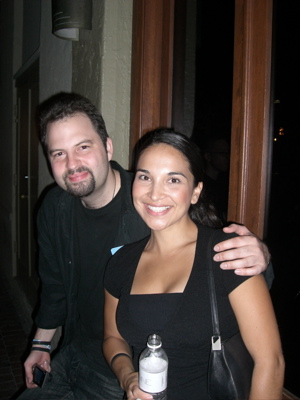 |
Travels: Snowball was a very funny commercial (for insurance) that is a big Katamari Damashii reference!
Dreammaker was a trailer for a long-form story piece from Filmakademie Baden-Wurtennburg in Germany. This piece contains a lot of fantastic work, but I was still surprised it won the Jury Award. The storytelling was rough, the characters' emotions were hard to read, and the story itself contains a total deus ex machina ending. However, a lot of the modeling, texturing, and effects were great, and the animation itself was perfectly fine.
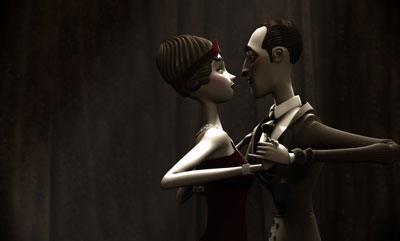 |
En Tus Brazos was really great, a student group effort about a Tango-dancing couple. It really deserved it's Award of Excellence. It's from Supinfocom, and the Animation Theater had one half-hour show that was mostly from Supinfocom. They are really doing a lot of great work right now! |
A Gentlemen's Duel from Blur Studios (trailer) was great. I had only seen short excerpts before and wasn't too happy with them, but after watching the complete version I really liked it. Blur is continuing to produce fantastic short films that enhance their reputation, it inspires all of us to find a way to make great work in our own commercial studios.
Ark from Poland's Platige Images carries on the tradition of The Cathedral and Fallen Art. Unfortunately, while the visual style is totally up to those films, I failed to understand the story, as did everyone I spoke to about the film. Thus, I found the Best of Show award hard to understand.
Game Technology 2007 was a compilation reel of current games. Frankly, they should have skipped everything except the footage from Crysis, an upcoming PC game from a German company called Crytek. It looked absolutely fantastic, showing off every CG trick in the (real-time) book. Not only does the game look fantastic, everything in the environment is destructible: you can mow down a tree with your weapon and have it fall on the enemies (or allies, it's up to you). Amusingly, despite the fact that the game is a first-person shooter, they managed to craft a demo reel that just barely avoids ever showing a human being get shot.
Portal was a very funny promotional film for the upcoming Valve game by the same name. Entertaining film to watch, and an effective tutorial on how to play the game.
ILM continues to make well-crafted reels especially for the SIGGRAPH show. Unfortunately, this one had a little too much surrounding stuff -- we watch these reels to see the material/prog reels from the movies. As always, their work this year was stellar.
Katsuyuki Suzuki absolutely wins the prize for the funniest video that has almost no animation in it with his The Recent Future Robot: HELPER Z.
I didn't have as much time as I would have liked to watch the Animation Theater due to appointments, but here's some of the cool stuff I saw (I probably saw about twice this many pieces, but some of them there's just nothing to say!) One of the really cool things they did this year was to put up Graffiti Boards like the one at right all around the Animation Theater. By the end of the show they were quite full! |
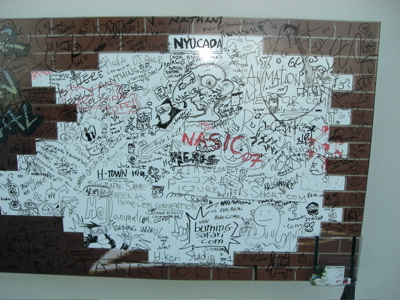 |
 |
Personally, I thought the best film of the entire show (better than anything in the ET) was Oli's Chance, from Germany. It's from Studio Soi, which according to Shuzo is a bunch of guys from Filmakademie Baden-Wurtenburg. It's a somewhat sad but ultimately heartwarming film with very pushed but affective character designs and a clear story. The good news is that it's online on the German Railway company's site here. Be careful though, it's a .wmv file and doesn't seem to have the correct MIME type attached, so it may be tricky to get it to download & play correctly. |
 |
Video 3000 from Suttgart Media Institute perhaps had the funniest idea of the show! It also looked just like a claymation piece most of the time. |
 |
The Animator and the Seat was a very funny short from Ringling School of Art & Design in Florida. I promise anyone who's ever done computer animation will sympathize with this piece! |
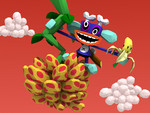 |
Polygon's short Boneheads was in the Animator Theater. It showed really well, and in fact in the session I was in it clearly made the audience laugh more times than any other piece! |
DreamMaker (the full version) was in the Animation Theater. See my comments above -- again, there's a lot of great work in this film, even though I don't think the piece as a whole deserved the level of award it received.
 |
This was a great year for Supinfocom Valenciennes -- one of the sessions seemed like it was mostly shorts from this impressive French school. I thought one of the most fun was Dynamo, but all of their shorts were quite watchable. |
 |
The other long-form piece they made was Versus, which was a Samurai-inspired "Spy vs. Spy" piece. Really fun! |
 |
Their cousins at Supinfocom Arles were also represented, notably by La Marche des Sans Nom, which was a good (if overt) political piece. |
 |
Arles also had Moutons, which had great character design and ideas in it. This is the best film about a "black sheep" ever! |
Respire, Mon Ami from Ringling was the ultimate grossout animation! To say more would ruin it...
In Japanese works, Omnibus Japan did Space Shower Hot Program Title, which was a fun bit of Transformers-like work.
Although it wasn't being shown at the show, I got to hear some information about Red Cliff, the current production at John Woo's Lion Rock Entertainment. Red Cliff is a film adaptation of the Romance of the Three Kingdoms, a famous Chinese historical novel. The source material is fantastic, a great episode from the warring states period in Chinese history.
John Woo is directing, and Tony Leung heads a mixed Chinese/Japanese cast (Chow-Yun Fat was supposed to be in the movie -- apparently there was some big blowup and he left). Visual Effects are by The Orphanage. This movie sounds like it could be great, another epic Chinese historical film.
It's been around for awhile that IMAGI (Los Angeles/Hong Kong) is making the Astro Boy movie. At SIGGRAPH I ran into my friend Colin Brady, and found out he's directing! His card says it all: "Colin Brady • Director • Astro Boy". Sweet.
Ralph was the Producer of the original Toy Story, and now is a partner in an animation production company called Alligator Planet. They've been producing various direct-to-DVD and special projects for clients in LA, using Indian offshoring companies. On some of his DVD projects, Ralphs worked with Prana Animation Studios in India, and he's also now consulting with them to help develop their production management capabilities.
However, the new thing Ralph wanted to talk about was Project 3650. Ralph is one of the founders of this new non-profit organization that's trying to help educate people about actions they can take to stop or reverse global warming. They're working with the former Vice-President of the US, Al Gore, as well as a lot of animation industry professionals, under the slogan, "Saving the Earth. One Cartoon at a Time."
They're arranging distribution for animations that either educate the public about global warming, or even better provide people with specific actions they can take in their own life to affect the rate of global warming. They're a non-profit, so they can't pay, but they're arranging a lot of forms of distribution for getting the message out there.
If you have any interest in using animation to help push the fight against global warming, check out their website at www.project3650.org.
Amazingly, all 15 teams completed an animation of 15 seconds or longer! The winner was "Switch" from the Bowling Green State University team -- I watched all the pieces, and I definitely agree it was the most accomplished. There was a second and third place winner, although I thought (and the judges sent an email basically confirming) that after the first-place finisher, there were actually about 6-8 pieces, including the Polygon piece, that were of similar quality.
Hats off to all the teams for their Iron Animator effort!
I got a private demo of the Tactic software suite from Southpaw Technologies. Southpaw is a new technology startup which is attempting to provide a generic database system for computer graphics productions. If you're familiar with Peter Nye's database system at Pixar or the in-house system at Polygon Pictures you know the kind of system in question: it enables tracking status and references of shots, models, scenes and so forth, and integrates with the digital content tools such as Maya/Shake/AE/etc. to enable artists to check in and check out pieces of the show to be worked on.
Tactic compares very directly to Polygon's in-house database system except that, since Tactic is newer, it uses a much more reasonable set of base technologies (Tactic is all implemented as a web-facing application written in Python; it can use any SQL database as its data store). One thing Tactic does not do is directly address the version management problem; it's more set up to assume that there's an underlying version control system such as Perforce around, although it's not required.
Gary, who gave me the demo, is a former Disney Feature Animation employee and clearly very familar with the problems that a system like this has to solve. Tactic is very attractive and as straightforward as any system dealing with this kind of fundamentally complicated underlying problem can be. Artists, Producers, and Managers all have reasonable views into the database system.
On the other hand, they're a small company struggling to implement required functionality as fast as possible, so not every usage case is covered. I found that it has a number of the same problems as our in-house system (for instance, animation involving constraints is always a problem in this kind of system); and is missing some workflow-specific features of our system (for instance, permissions are applied entirely at the database field level, so there's no way to say that an Artist is allowed to set a shot to "submitted" status but only a supervisor is allowed to set it to "final").
While their focus was initially on shows using Maya, they've also got an early customer using it for a Flash-based show so they're getting pulled in the direction of more support for that sort of pipeline (irrelevant to us of course). They also don't have nearly the support for AfterEffects, or compositing in general, that our in-house system does.
The have a clear internal architecture, and provide source to the system, so it's very possible to add on to the system in-house. Unfortunately, they haven't yet got around to the kind of documentation of the internal architecture that would make that a high-productivity option, just because they're a new company.
Because we already have a system in place at Polygon, we're not sure yet whether it's worth swtching, but if you were a studio that doesn't already have this sort of system internally, it would be very compelling to start from here rather than from scratch.
I didn't get much time on the exhibits floor this year, but I still saw a few really cool things. This was one of them!
Larry Gritz and the Gelato group at nVidia have been developing their renderer for a few years and now they've integrated it into a fantastic shot lighting tool. This tool (shown for the first time at the show) integrates into Maya as an alternate preview window. If you've set up your scene for rendering with Gelato, this window gives you interactive preview of the full Gelato scene. You can move lights, reassign shaders, change shaders values, and the window updates, in full resolution, in about 1 second (including shadow direction/density, depth of field, etc., etc.). It's a totally different way to light -- successive approximation becomes a trivial approach rather than a laborious piece of guesswork. And, when released, these results are guaranteed to be the same as the offline Gelato renderer will produce, giving you (finally) perfect interactive preview of an offline renderer.
The demo he showed was a scene from nVidia's new short The Plush Life using a quad G80 (aka 8800GTX) with a lot of GPU memory (he said the GPU memory is the key element for this). Of course, the performance scales up with the number and speed of the GPUs used. Larry said their idea is the position this high-end hardware as a "lighter's workstation" which can be used in lighting departments.
My friend Andrew Willmott from Maxis led a contingent of folks who presented four sketches about various aspects of the forthcoming video game, Spore, designed by Will Wright. Andrew is the Lead Engineer for Spore, and he did most of the talking, but Shalin, Kate, and Ocean helped him with demos.
To me, the most interesting sketch was the last Spore sketch, "RigBlocks: Player-deformable Objects" (it's sort of funny to write about this, since I've known about this work for a couple years due to working at EA, but before this I couldn't talk about it!).
One of the key abilities of Spore is for players to be able to design their own creatures, buildings, and vehicles. The creatures (not covered in this sketch) use a fantastic editor that glues together pre-created bodies, limbs, heads, etc. using a real-time polygonization of a blobby surface, and then procedurally textures them with a combination of artist-created base textures and tons of procedural modification and combination techniques (which was actually covered in the first Spore sketch).
However, for the vehicles and buildings, they use this cool Rigblock technique. Basically, the building and vehicles are built out of small building blocks. Here's an example of what you can get out of the building editor:
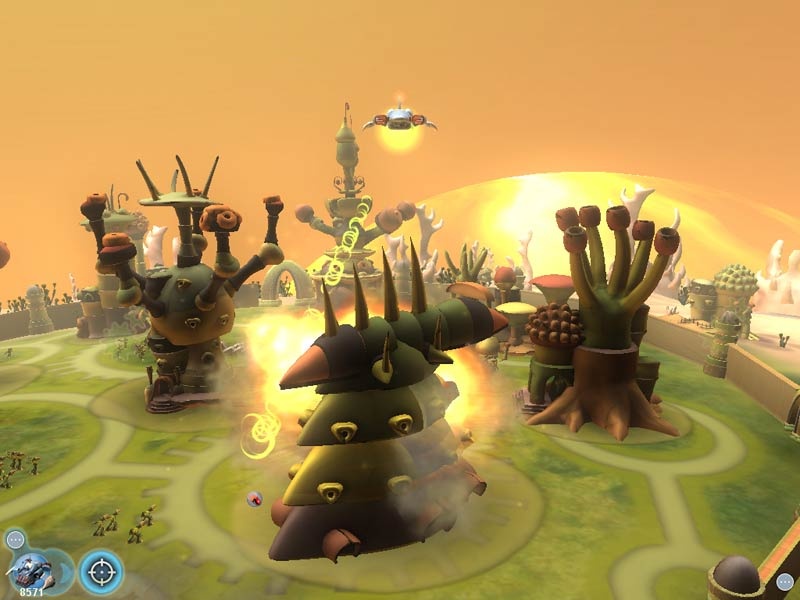
So for instance, the foreground building above is built out of (three copies of) a basic building shape, with a special item on top and some doors and windows. The point of the RigBlock idea is to let the player be able to vary the blocks in some meaningful way.
A lot of the blocks have basic sizing controls, as with the base block above. But they can have lots of other controls as well. Unfortunately, I don't have the materials Ocean used to show the building editor functionality (the company wouldn't let him post them), but the video below from GDC 2007 gives you some idea how it works (especially if you watch it a couple times!).
In the sketch they went into considerably more detail about how artists author these RigBlocks. Basically, the artist actually sets up the little handles in the Maya file, and then uses any combination of skinning, morphing, and expressions to define how the player can change the Block. Then there's a (difficult from the sound of it) way that you indicate to the game engine how to replicate that.
This was a sketch from Eric Armstrong, the senior animation director at EA Canada's sports titles, about a tool called ANT that EA has developed over the last couple of years to help artists have control over in-game motion.
Once again, it's unfortunate I don't have Eric' materials because the proof of this sketch was in looking at the EA basketball game the year before they starting using ANT and the year after. The motion was dramatically better, with more context awareness, more fluid belnding, and much less awkward "spinning about their axis".
The difference wasn't because they used any more complicated blending or mixing technology at all; the difference was purely because the ANT tool enables the artists, not the programmers, to have control over when, to what extent, and with what timing curves the animations were blended. It's a beautiful case study in why the objective of tools programmers should always be to give control back to the artists.
The very last event of the show was the sketch session on fluid simulation, and the last sketch was from the guys who made the scenes of the Persian army being destroyed in a storm in the movie 300 (their company is called Scanline VFX, and they use an in-house fluid simulator called RealFlow). It was well worth sticking around for!
Their fluid simulator seems to be the strongest package in use in visual effects right now. They not only do the wave-propagation simulation, they simulate the separation of individual drops from the waves, and the simulation of foam effects created by turbulence. As we heard at the Ratatouille sketches, most other fluid pipelines add spray and foam as postprocessing steps.
Unfortunately, their fluid simulator is so physical that it can be kind of hard to direct individual elements. What they did to make this incredible wave was set up parameters for the kind of motion they were hoping for, and then run an 8000x8000 cell fluid simluation to get a huge tank of wave motion. Then they scouted around in the data looking for a promising hero wave, found one, and rotated the fluid around so that the hero wave was in front of the camera (!).
The timeframe of the 300 job was also amazing. He said that they got the call to make these shots (there were only 5 shots for this particular effects) and they had one week to get the rough versions back to the director and 6-7 weeks to complete the entire job.
The script called for a huge Persian trireme to break apart. Since they didn't have a splintering wood simulator, they then wrote a splintering wood simulator in the course of the job! They experimented with several ways to make the splintering happen -- initially they thought they would "just" model every structural rib and element in the ship and pin them together with costraints. Unfortunately, they found that this made the whole ship for too "squash and stretchy", so they eventually adopted a hybrid approach where the ship's key structural elements (keel and frame) were hand-animated, and not driven by physics. Then they created an intermediate set of structural members that were constrained to the key structural elements. The ship's hull and skin were then attached with constraints to the intermediate elements. The resulting destruction is very satisfying -- those of you who've seen the movie probably remember it.
They then re-rigged their cloth simulator to accomodate tearing, for the sails of the ship; and added motion-captured crew members, who were eventually transitioned to ragdoll animations as the destruction progressed.
Although their initial contract was only for two shots, they eventually added the third (underwater) shot as well. This was initially shot in a tank, but the results weren't great, so they modeled some more detailed Persian crewman and ran fluid and ragdoll simulations, then added a bunch of both simulated and hand-animated debris.